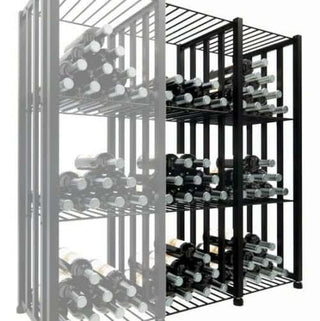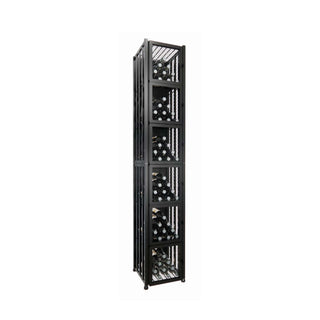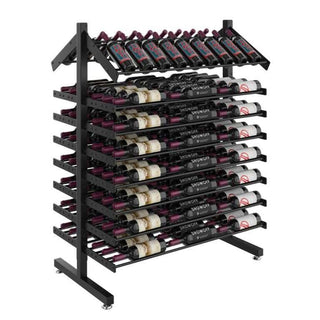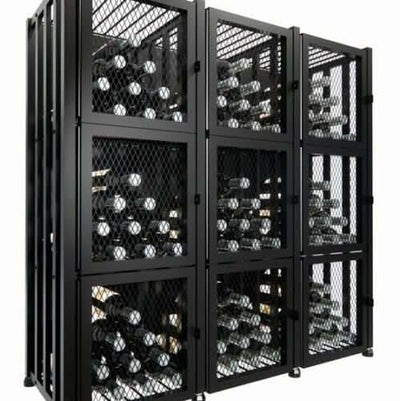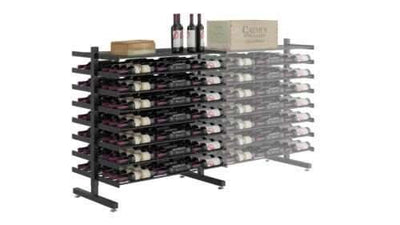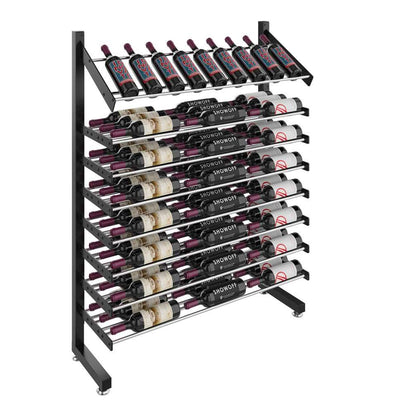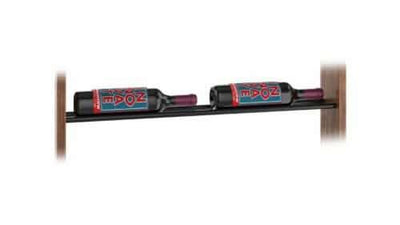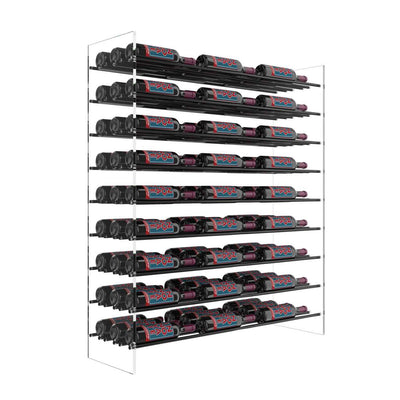Ten Common Wine Myths And Misconceptions, Debunked
Outline:
- Ten Common Wine Myths And Misconceptions, Debunked.
- Its Price Determines a Wine's Quality.
- All Wines Are Created Equal.
- Pair Red Wine With Meat, While Fish And White Wine Go Well Together.
- Sweet Wines Are Terrible.
- White Wine Should Be Served In An Icy Style.
- It Would Help If You Had a Lot Of Space In Your Refrigerator For Storing Wine.
- Wines With Corks Are Better Than Screw Cap Closures.
- Blended Wines Are Poor In Taste.
- Wines From Certain Regions Taste Better Than Other Wines.
- The color of the wine indicates whether it is red or white.
- We Associate Certain Flavors With Specific Grape Varieties.
- Familiar With Myths
The wine industry is a billion-dollar industry that has been around for centuries. There are common misconceptions about wine and what it can do to your body. But did you know that there are common myths out there too?
Here are ten common wine myths and misconceptions debunked so you can set yourself free from them!
Its Price Determines a Wine's Quality.
Wine is not a product that benefits from this misconception. Wine is not the exception to this rule; it merely proves it. Many variables influence the cost of a bottle of wine, including the price of land, farming, labor, yield, production quantity, bottles, labels, corks, machinery (and so on).
Supply and demand are the most significant driving forces when it comes to expensive wine. If a producer produces 2,000 bottles of their most excellent wine every year, there is a massive demand for it! , it will be sold at a higher price point than the exact wine that only produces 50 bottles of, for example.
The best wine in the world is still relatively affordable if you choose carefully. For example, an excellent wine from New Zealand's Central Otago region called Te Kairanga will only set you back about $50 or so per bottle (if not less). You don't have to spend ridiculous amounts of money to enjoy something great!
All Wines Are Created Equal.
It is true that all wines, by law, must contain a certain amount of alcohol and natural sugars to be classified as wine (as opposed to grape juice). There are huge differences between the different types of wines. For example:
Icewine can only be produced when specific conditions allow for grapes to freeze on the vines while still containing enough sugar content within them; this will enable winemakers to make a delightful dessert wine from typical table grapes.
As mentioned above, some typical table grapes will not produce decent quality ice wines because they don't have high enough amounts of sugar during colder growing seasons. This means that common varieties such as Pinot Grigio or Chardonnay cannot make great ice wines.
There are dozens of typical table grapes, but only a few varieties can produce top-quality icewines. This is because the exact conditions needed for pure grape juice to freeze on vines also rarely happens, which means less common wines have more variability in their final product.

Pair Red Wine With Meat, While Fish And White Wine Go Well Together.
There is still a lot to learn about this fascinating drink, with many varieties and tastes to offer us all! One common misconception, for example, is that red wine goes well with meat while white wines go well with fish.
This common belief is false, however, and it's the other way around. Fish goes better with white wine, while red meat goes better with red wines. Red wines go great with white meat as well (for example, chicken).
A medium-bodied red wine goes well with a fatty, fleshy fish like tuna, salmon, or swordfish than it would with a lighter white wine. A blood steak may also be prepared with white wine, as long as you get the right one. A fruity and robust white like pinot noir can stand up to a thick slab of beef on its own.
Sweet Wines Are Terrible.
Some individuals will avoid sweet wines since they believe all of them will taste like white zinfandel. There are, however, excellent sweet wines available.
It's composed of grapes with botrytis, also known as noble rot, a fungus that causes deterioration in the grape and makes it extremely rare yet delicious. That is simply proof that some of the world's most ancient sweet wines exist.
White Wine Should Be Served In An Icy Style.
You've undoubtedly heard that red wine should be served at room temperature, while white wine should be served ice cold. However, if the wines are excellent, you'll get the best results if they're done between ice cold and room temperature.
According to wine expert Tom Stevenson: "If you're drinking an excellent white burgundy, served too cold, it will be flabby and under-expressive. However, if it's warmish or even room temperature, the aromas can seem a little tired."
It Would Help If You Had a Lot Of Space In Your Refrigerator For Storing Wine.
It's a myth in the wine world that you need a lot of space in your refrigerator to store wine.
The common misconception is that wine needs to be stored in a cool dark place with about 55 degrees Fahrenheit. However, Yoon Ha, who works for Wine Spectator Insider, isn't entirely true. She says that it's best if your refrigerator has adjustable shelves which you can move up or down to fit your needs. Also, she says you should place the bottles so that they aren't touching each other since if they do, it can cause breakage of the corks, which lets air in and changes the taste of wine for good.
Wines With Corks Are Better Than Screw Cap Closures.
The ideal cork would be the perfect seal in a perfect scenario, but perfect pins are pretty unusual. Screw-caps are a beautiful way to round out your wine collection while also providing helpful information about the bottle's contents. They eliminate many of the problems associated with corks, such as cork taint, oxidation, and leakage, giving wine lovers peace of mind that they're receiving high-quality and consistent wine every time they open a bottle.
Cork taint is familiar in wines with cork closures because the wine reacts to the chemical compound trichloroanisole (TCA) that can be present and natural cork stoppers, which come from trees and are therefore not perfect. Screw caps provide an airtight seal better than corks or any other closure type by exposing the least amount of wine to oxygen possible. This seals unwanted flavors and aromas, such as TCA and contributes to longer life spans for wines stored under screw cap closures.
Blended Wines Are Poor In Taste.
Blended wines are everyday in taste but have the additional benefits of cost-effective and sometimes better quality than other types. Blending is common practice to help maintain consistency across large production runs and ensure that there will be enough wine for all seasons/years.
Blended wines tend to get a bad rap because they often come in non-traditional containers like boxes and bags, making people think they taste worse than their traditional counterparts (e.g., red vs. white). That said, blended wines usually feature quality grapes to offer an affordable alternative for consumers who want something more sophisticated without spending too much money on it.
Wines From Certain Regions Taste Better Than Other Wines.
While it's common to think of climate as one of the essential factors in how a wine will turn out, this common myth doesn't hold up under scrutiny either! Remember that winemakers use fermentation techniques - not where their grapes grew or what type of vines were used there - to make all wines, including sparkling varieties like champagne. Besides location, there are many other factors (e.g., who harvested them). Even identical varietals grown side-by-side may produce very distinctive flavors due to differences in water management during production and how much wine each grape makes.
The common myth also doesn't apply to sparkling wines like champagne which are often made from grapes grown in the same region as those used for still ones such as cava or prosecco - and unlike all other types, bubbles aren't an indicator of quality either!
The color of the wine indicates whether it is red or white.
This common misconception stems from the fact that people often associate certain colors with specific wines, but this idea has many exceptions. For example, white wine can become very dark in color if it's been left out for so long that all of its natural sugars have turned into alcohol. It doesn't mean that the wine has gone wrong - just that it may not taste as sweet as you were expecting because all those sugars have disappeared! White wines also vary tremendously based on where they're grown and what type of grape was used. Further complicating matters, many countries label their whites simply by color (e.g., 'rose'), confusing wine drinkers.
The color of red wine is not an indicator of quality or flavor - but it's common knowledge that the color of white wines can vary widely depending on how they're produced!
We Associate Certain Flavors With Specific Grape Varieties.
This common myth about wine has some truth since many popular types are associated with particular fruit flavors; however, there are also exceptions to this idea and plenty of other factors that determine what a wine tastes like. While grapes give distinct characteristics to all wines made from them throughout history, winemaking techniques have also changed over time.
This means that wines that used to taste like apples (e.g., pinot grigio) often now produce flavors that are more common in other types of fruit, such as pears or melons!
Familiar With Myths
Storing wine is a tricky business. There are plenty of myths and misconceptions out there that can confuse even the most experienced drinker, but don't worry!
Wine Coolers America has the solutions to all your storage needs. Whether you're looking for advice on how to store reds or whites, need help figuring out if it's time for an upgrade in cooling technology, or want some guidance picking out which size refrigerator will best fit your space, we have you covered. Call us today!


























